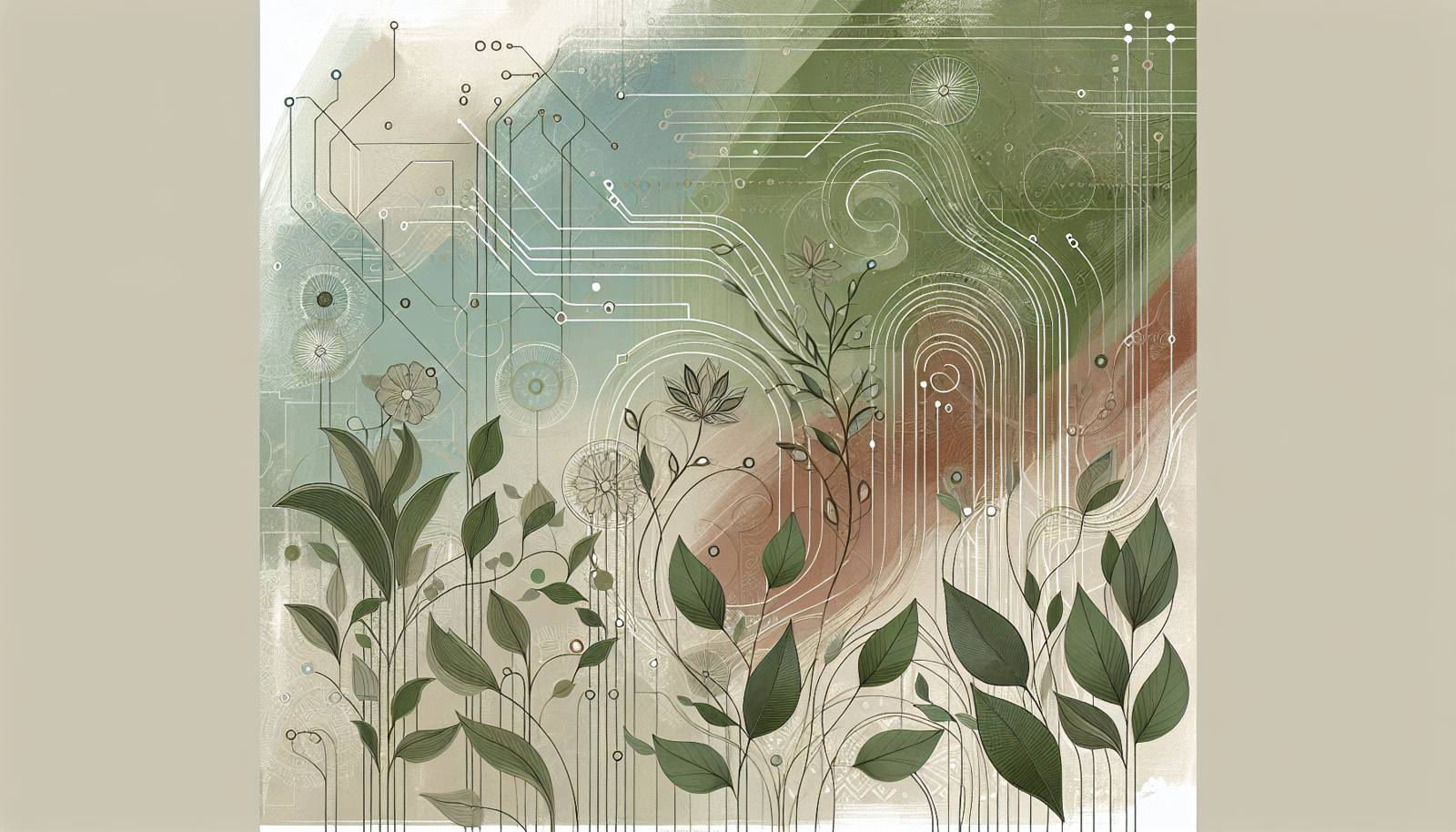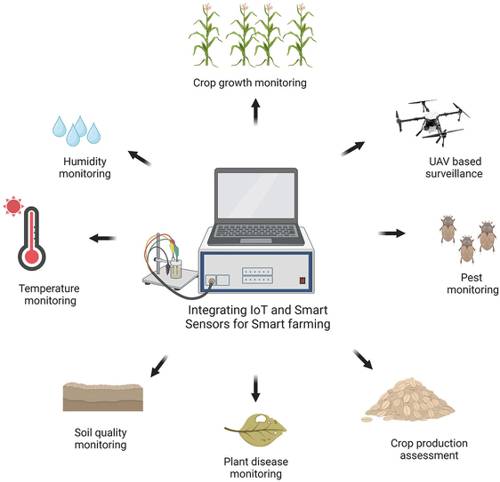
FAQ About Sensors for Indoor Plant Microenvironment Monitoring

What are sensors for indoor plant microenvironment monitoring?
Sensors for indoor plant microenvironment monitoring are devices that measure various environmental parameters surrounding indoor plants, such as temperature, humidity, light intensity, soil moisture, and air quality. These sensors help provide insights into the optimal conditions for plant growth and health by providing real-time data and alerts.

Why is monitoring the microenvironment important for indoor plants?
Monitoring the microenvironment is crucial for indoor plants as it allows growers to optimize growth conditions. Factors like temperature, humidity, light, and soil moisture significantly impact plant health. By tracking these parameters, growers can make informed adjustments, ensuring plants receive ideal conditions for growth and reducing the risk of issues such as overwatering, insufficient light, or inadequate humidity levels.

What types of sensors are commonly used for this purpose?
Common sensors used for indoor plant microenvironment monitoring include temperature sensors, humidity sensors, light sensors, soil moisture sensors, and CO2 sensors. Each of these sensors measures specific environmental parameters to help optimize plant growth conditions. Some advanced sensors combine multiple functionalities in a single device for comprehensive monitoring.

How can temperature sensors benefit indoor plant growth?
Temperature sensors help monitor the thermal conditions around indoor plants, ensuring they stay within an optimal range for growth. These sensors can alert growers to deviations from ideal temperatures, allowing timely adjustments to heating or cooling systems. Maintaining the right temperature is critical for processes like photosynthesis and preventing stress on the plants.

What role do humidity sensors play in indoor plant environments?
Humidity sensors measure the amount of moisture in the air surrounding indoor plants. Maintaining optimal humidity levels is vital, as too dry or too wet conditions can harm plants. High humidity can lead to mold growth, while low humidity can cause dehydration. These sensors inform growers about the current levels, making it easier to adjust humidifiers or dehumidifiers accordingly.

How do soil moisture sensors work?
Soil moisture sensors measure the water content in the soil by using electrical resistance or capacitance techniques. These sensors provide data on when to water the plants, helping avoid overwatering or underwatering. Proper soil moisture levels are essential to prevent root rot and ensure that plants have adequate water for nutrient uptake.

What are light sensors, and how do they help indoor plants?
Light sensors measure the intensity and duration of light received by indoor plants. They help in ensuring that plants get the right amount of light necessary for photosynthesis. Light sensors can guide the adjustment of artificial lighting or the placement of plants in relation to windows to optimize growth conditions.

Can sensors detect air quality for indoor plants?
Yes, certain sensors can detect air quality by measuring parameters such as CO2 levels and the presence of volatile organic compounds (VOCs). Good air quality is essential for plant respiration. These sensors help growers identify and mitigate issues related to poor ventilation or pollution that could affect plant health.

Are there any environmental parameters that these sensors can't measure?
While many sensors can measure critical environmental parameters like temperature, humidity, light, soil moisture, and air quality, there might be niche conditions they cannot measure directly. For example, some specific mineral content in the soil or microscopic pest presence might require specialized testing equipment or professional analysis.

How do wireless sensors benefit indoor plant monitoring?
Wireless sensors offer the advantage of remote monitoring, allowing data to be collected and accessed from anywhere with internet connectivity. This makes it easier for growers to keep track of environmental conditions without being physically present. Wireless sensors can also integrate with home automation systems for real-time alerts and automated adjustments.

What are some common brands or models of these sensors?
Some popular brands and models of sensors for indoor plant monitoring include devices from companies like Netatmo, Xiaomi, PlantLink, and Parrot. These manufacturers offer a range of sensors designed for environmental monitoring, each with different capabilities and price points tailored for various needs.

How accurate are these sensors in measuring environmental conditions?
The accuracy of sensors can vary based on their design and technology. High-quality sensors typically have a good degree of precision and reliability. However, factors such as sensor calibration, environmental interferences, and maintenance can affect their performance. It's important to choose reputable brands and regularly check sensor accuracy through calibration.

How can sensors be integrated into a smart home system?
Sensors can be integrated into smart home systems via platforms like Amazon Alexa, Google Home, or Apple HomeKit. This integration allows users to automate environmental control processes, such as adjusting lighting or humidity based on real-time sensor data. It provides a seamless way to maintain optimal conditions for indoor plants without manual intervention.

How do sensors communicate data for monitoring?
Sensors typically communicate data through wireless technologies like Wi-Fi, Bluetooth, or Zigbee. This data is then transmitted to a central hub or directly to a smartphone app, where it can be monitored and analyzed. Some sensors may also support cloud storage, enabling users to access historical data and trends over time.

What maintenance do these sensors require?
Most sensors require minimal maintenance, such as regular cleaning to remove dust or debris that might affect their readings. It's also essential to periodically check the battery if they're not connected to an external power source. Calibration might be necessary over time to ensure continued accuracy of the measurements.

Are there specific sensors for different types of plants?
While many sensors are versatile and can be used for various indoor plants, some are specifically designed for certain plant types. These specialized sensors might focus on parameters critical for specific species. However, most general-purpose sensors adequately cover the basic needs of a broad range of indoor plants.

How expensive are these sensors for indoor plant monitoring?
The cost of sensors for indoor plant monitoring varies widely depending on their functionality, brand, and technology. Basic models may start at around $20-$50, while more advanced devices with multiple functions and smart integration features may cost upwards of $100. The investment is generally proportional to the level of precision and ease of use provided.

Can sensors help with plant disease detection?
While sensors primarily monitor environmental conditions, they can indirectly assist in disease detection by highlighting unfavorable conditions that could lead to plant stress or disease. For instance, persistently high humidity detected by sensors could indicate the potential for mold or mildew growth.

What are the future trends in indoor plant sensor technology?
Future trends in indoor plant sensor technology include the development of more integrated systems that combine multiple sensors in one device, increased use of artificial intelligence for predictive analytics, and more eco-friendly designs. These innovations aim to enhance precision, user convenience, and sustainability in plant care.

Can these sensors help in reducing water usage for plants?
Yes, by providing accurate data on soil moisture levels, these sensors can help reduce water usage by preventing overwatering. They enable targeted watering strategies, only applying water when necessary, which not only conserves water but also promotes healthy plant growth by avoiding root rot and other water-related issues.
